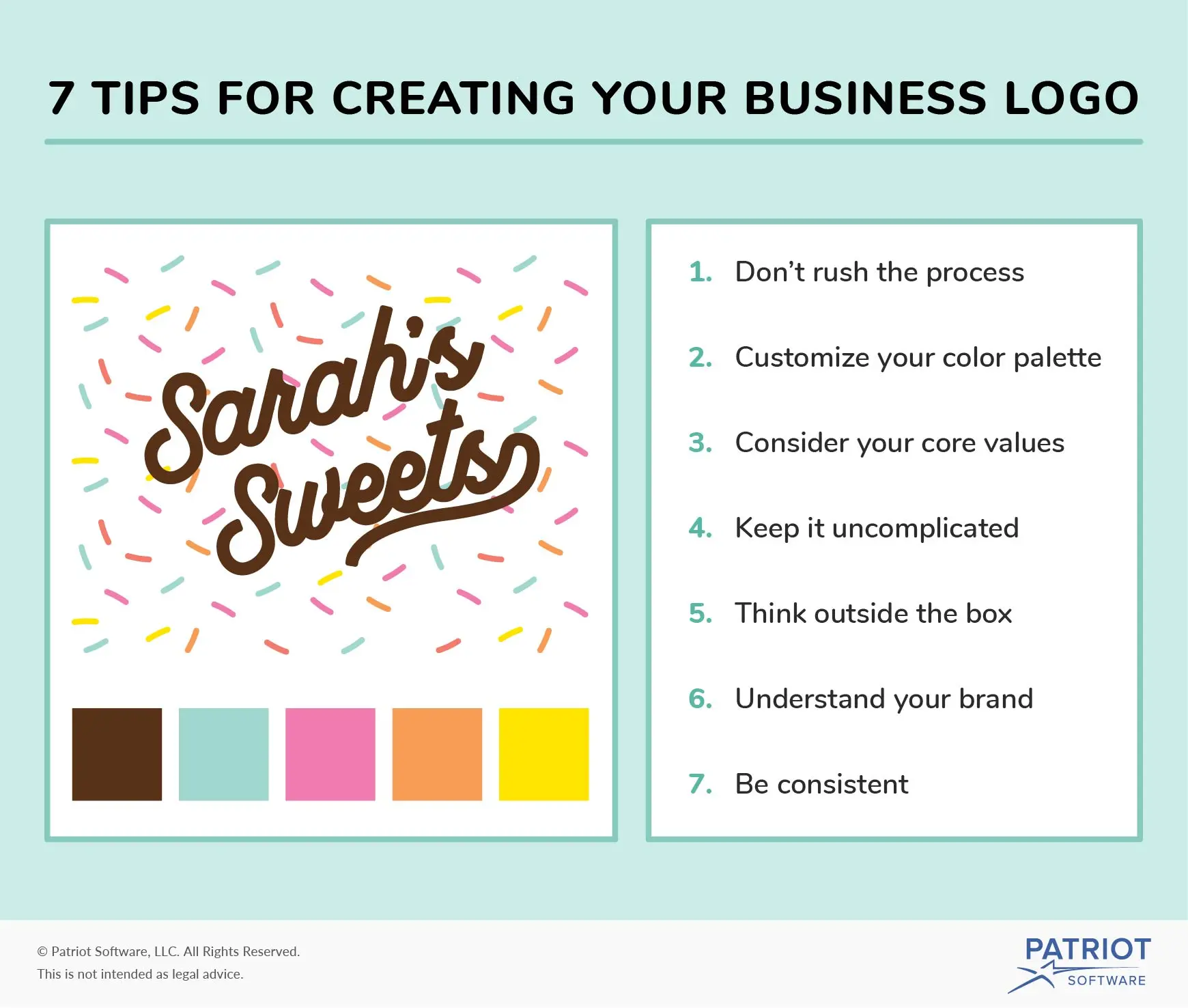Creating a logo for your business is no easy task. Designing your company’s visual identity takes a lot of time and can be costly. If you want to make a good first impression to customers, craft a business logo that is timeless, easy to understand, and a representation of your brand.
What is a business logo?
A business logo is a symbol of your company’s identity. Your logo visually represents your business and what you offer. And, your logo is your business’s most important design. Your logo is the foundation of your marketing materials (e.g., signage and advertisements). Your logo is everywhere.
Logo types vary from business to business. Your logo can be an icon, text, or a mixture of both. A type of logo that works well for one business may flop for another.
Your business logo can make or break your business. Your logo impacts the way customers perceive your brand.
7 Tips for creating your business logo
Take a look at these seven tips to help create a killer logo for your small business.

1. Don’t rush the process
Designing your business logo is a delicate process. It takes a lot of time and patience to create a logo that perfectly represents your brand. Instead of rushing through the process, take your time.
Collaborate with teams and departments (if applicable) within your company to get fresh ideas. And, encourage employees to bounce ideas off one another. Consider setting up regular meetings to discuss your logo. Don’t feel like you need to rush through meetings to get the job done.
Sometimes, too many people sharing opinions isn’t a good thing. But in the case of your business logo, the more opinions you have, the better. And with more ideas, the more likely you are to get it right the first time around.
2. Customize your color palette
When it comes to your logo design, color is key. According to one source, color increases brand recognition by up to 80%.
So, which colors best represent your business? Consider researching what different colors mean. For example, blue can represent trust or strength while orange could mean confidence.
Think about the message you want to convey. Bright and bold colors grab attention. However, they can also be considered over-the-top or flashy.
Consider the personality of your brand when choosing a color scheme for your logo. Find what colors truly represent your business and brand as a whole.
Remember to incorporate your color scheme across all platforms, including your website and social media accounts.
3. Consider your core values
What are your company’s values? What is your mission as a business? These are questions potential customers want answers to.
Showcase your core values by creating a logo that reinforces them. Tie in your business’s core values while designing your logo. Some of your core values might fall into certain categories, such as loyalty, commitment, and dependability.
For example, say an insurance agency has a core value about protecting their customers. The insurance company’s logo might include a shield to symbolize protection.
Think about different symbols and text that can convey your core values to your target audience. Review your company’s values and make a list of what kind of imagery you can use.
4. Keep it uncomplicated
Sometimes less is more when it comes to designing your business logo. Instead of over-complicating the process, keep it simple.
While creating your company logo, don’t overthink the design. Start by brainstorming different ideas and sketching them out. Sometimes the most basic ideas can shape the most powerful logo.
Take a look at Apple’s iconic logo. It’s an apple with a bite taken out of it. It is simple, but almost anyone can recognize the brand behind it.
The same simplicity can apply to your business logo. It doesn’t have to be complex. Your logo needs to be something an individual can look at and say “That’s XYZ Company.”
5. Think outside the box
Although it’s important to keep up with the latest trends, you must think outside the box when you create your own logo.
No one wants to see a logo that’s a “been there, done that” design. To create a logo that stands out, be clever and unique.
It might be tempting to use the first good idea that comes to mind for your logo. But to distinguish your brand from competitors, you need to get creative.
Research competitors’ logos to avoid duplicating their ideas. And, take a look at other logos to see if it sparks creativity.
6. Understand your brand
Your logo design should show customers what your brand stands for. But, you need to thoroughly understand your brand before you can produce an effective business logo.
Take a step back and determine the meaning of your brand and who your audience is. Are you sophisticated? Humble? Reliable? Use your findings to incorporate your business’s personality and brand into your logo.
Think about your audience while designing your logo. Conduct a market analysis to determine your target audience. Pinpoint what they are looking for in a logo and go from there. Your business logo should resonate with your audience and show them what your brand is about.
7. Be consistent
Whatever you decide to use for your small business logo design, make sure it remains consistent with your color scheme, website, and storefront.
Your audience should be able to recognize your logo and associate it with the rest of your business. Make sure your target audience receives consistency.
If your website uses blue and green, incorporate those colors into your logo. If you decide to switch up the colors on your logo design, be sure to change the colors on your website, too.
Be consistent in all aspects of your business, especially with logo and website design. Consistency could mean the difference in whether or not someone recognizes and remembers your logo and brand.



